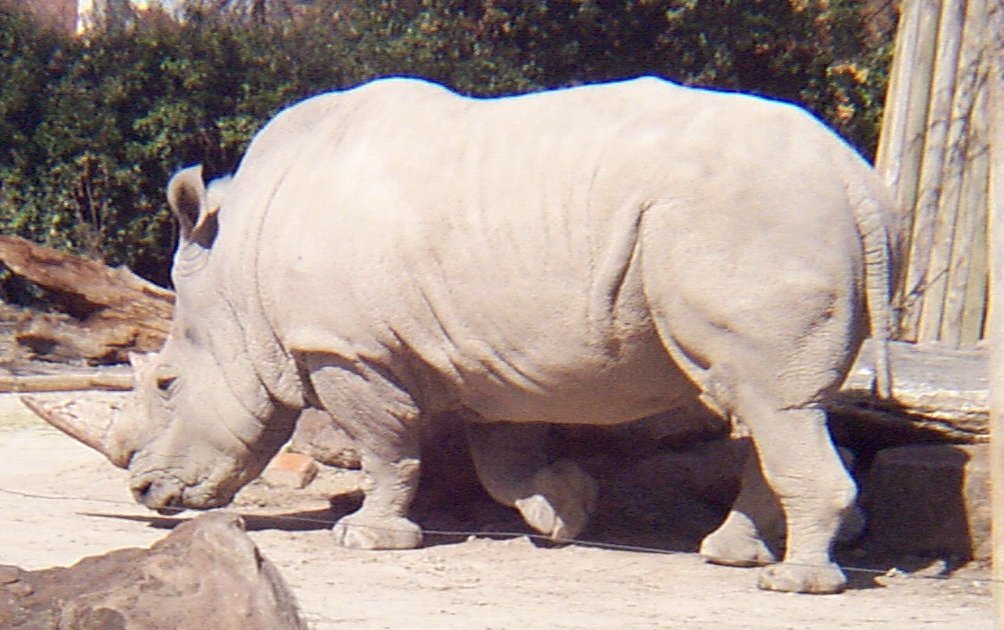|
Black Rhinoceros |

White Rhinoceros |
The presently living rhinoceros are a well-defined group of animals
whose members closely resemble each other, in spite of the fact that two
of the species live on the African continent and three in Asia. The African
rhinoceros are from a separate branch (subfamily Dicerotinae) which includes
the present-day Black Rhinoceros (Diceros bicornis), which originally
fed on foliage, and the Square-Lipped Rhinoceros (Ceratotherium simum),
also know as the White Rhino, which has become adapted for feeding on grass.
|
Black Rhinoceros |

White Rhinoceros |
| Name: White and Black Rhinoceros |
Scientific name:
|
| Range: Africa, Mostly in Kenya and Zimbabwe. |
| Habitat: White Rhinos are savanna dwelling grazers, while the Black Rhino is a browser living in forest and thorn scrub. |
| Status: Black Rhino is endangered, White Rhino is Vulnerable. |
| Diet in the wild: Water grass and leaves |
| Diet in the zoo: Hay, Lucerne chaff, horse cubes, carrots and bananas as a treat. |
| Location in the zoo: African Savannah |
| General information:
Black rhinos are solitary animals, only coming together to mate. By contrast, the more gregarious white rhino only breeds successfully when there are small groups. The most lasting bond is between females and young, the calf staying with the mother for about five years. The black rhino is the more aggressive of the two species. It can move at speeds up to 40 miles per hour for short distances -- the speed of a race horse! Rhinos have poor eyesight and are likely to charge any suspicious moving object without provocation. Their hearing and sense of smell, on the other hand, are very good. White rhino males mate with any estrous female within their territory
after a long courtship session. Mating lasts 20 to 30 minutes. The female
bears a single calf; the calf suckles for at least one year but can eat
grass at two months. The calf lives with the cow for around 3 years until
the next calf is born.
Black rhino with calf "Little One." |
| Page author: Obi Ibeto. |
![]()
WhoZoo Home
Asian Rhinos
at the Fort Worth Zoo
Mammal Index
Animal Index
| Sources and Links
Black Rhino at the Smithsonian Britannia Encyclopedia (on animals), Section R, 47-53. |